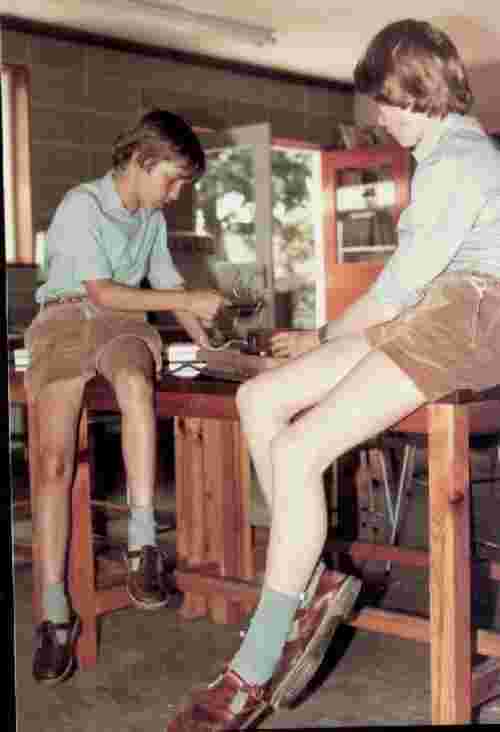
Figure 1.--These two English prep school boys wear school sandals. They are the style with the wider center strap that became popular during the 1970s. |

|
English school sandals were closed-toe
sandals looking more like shoes than what we generally think of sandals. They were commonly referred to as sand shoes in England. The most common type of school
sandal was what Americans would refer to as strap shoes with a "T" bar strap. Another less common type was double bar sandals. A new style appeared in the 1960s. The width of the center stap was increased. At first it was only increased to an inch or less. Eventually became so wide that the school sandal came to look much like a shoe. This style became much more popular with the boys than the traditional style which the narrow center piece that the girls continued to wear. While the "T" strap design was the primary desisn for school sandals, some boys also wore the two bar design. It was not vet popular, however, as many boys considered it a girls' style. Beyond these basic styles, there were many variations. Some sandals had various types of perferations to increase ventilation. They also came with a wide avariety of soles, including some that left animal tracks.
There were two basic types of school sandals. Noth had a "T" bar, but one had a single horizontal strap while others had two. The single strap "T" bar was bybfar the most popular with the boys.
The most common type of school
sandal was what Americans would refer to as strap shoes with a "T" bar strap. Another less common type was double bar sandals. A new style appeared in the 1960s. The width of the center stap was increased. At first it was only increased to an inch or less. Eventually became so wide that the school sandal came to look much like a shoe. This style became much more popular with the boys than the traditional style which the narrow center piece that the girls continued to wear. While the "T" strap design was the primary desisn for school sandals, some boys also wore the two bar design. It was not vet popular, however, as many boys considered it a girls' style. Beyond these basic styles, there were many variations. Some sandals had various types of perferations to increase ventilation. They also came with a wide avariety of soles, including some that left animal tracks.
While the "T" strap design was the primary desisn for school sandals, some boys also wore the two bar design. It was not vet popular, however, as many boys considered it a girls' style. A reader writes, "I noted at the HBC "English Outing: the Circus" page is a boy wearing double t-strap sandals. I'm beginning to think that these sandals were more common in the UK than I original thought. I thought they wore single t-straps almost exclusively".
Our personal experience comes almost exclusively from the 1980s. The schools where boys wore sandals usually had the single bat sandals. Often boys wore sandals where the center straps were very wide, almost like shoes. At some schools the older boys seem to have had trouble buying sandals and they were wearing adult styles. Some schools were less insistent on footwear than others. We did see a few boys wearing the double straps, but they were a small minority. Some boys also wore the open-toe Roman sandals. This was a prep schools. Sandals were much less common at state schools.
Some sandals had various types of perferations to increase ventilation. Mothers considered sandals a healthy alternative to shoes for boys. Ventilation was one of the features that was considered healthy.
Sandals came with a wide avariety of soles. Often they came with rubber soles that had nuch heavier ribbing to provided added traction for the playground. Some sxandals had special soles that left animal tracks.
Navigate the Boys' Historical Clothing School Sandal Pages:
[Return to the Main school sandal page]
[England]
[France]
[Ireland]
Navigate the Boys' Historical Clothing Web Site:
[Introduction]
[Activities]
[Biographies]
[Chronology]
[Cloth and textiles]
[Garments]
[Countries]
[Topics]
[Bibliographies]
[Contributions]
[FAQs]
[Glossaries]
[Images]
[Links]
[Registration]
[Tools]
[Boys' Clothing Home]
